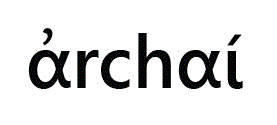Abstract:
The definition of the sophist as "image-maker" allows Plato to add to the novelties he presents in the Sophist two topics he hadn't deepened in his previous dialogues: (a) a "definition" of being (247e) and (b) the influence this position will have on the relationship between image and truth. From a first definition of the image proposed by Theaetetus in 240a we deduce that, even if it is not true, it is "really" (ὄντως) an image, which does not coincide with the devalued or secondary reality that Plato had always attributed to this notion, from which all truth was absent. This conclusion, indeed, astonishes Theaetetus, attached to the Platonic "orthodoxy". This astonishment is not present in the orthodox version of the text of the passage 240a-c of the Sophist, which inherits from a modification of the widespread text from 1851. Once the original version is restored, the definition of the fact of being proposed in 247e justifies the "really real" character of the image, which respects the condition required to everything that "possesses" being: the possibility of acting or being affected. Indeed, the image is "affected" by the model, that it tries to imitate, because the model "affects" it. The image, even if it is not true, is real.
Keywords:
Sophist
; image; really; truth
